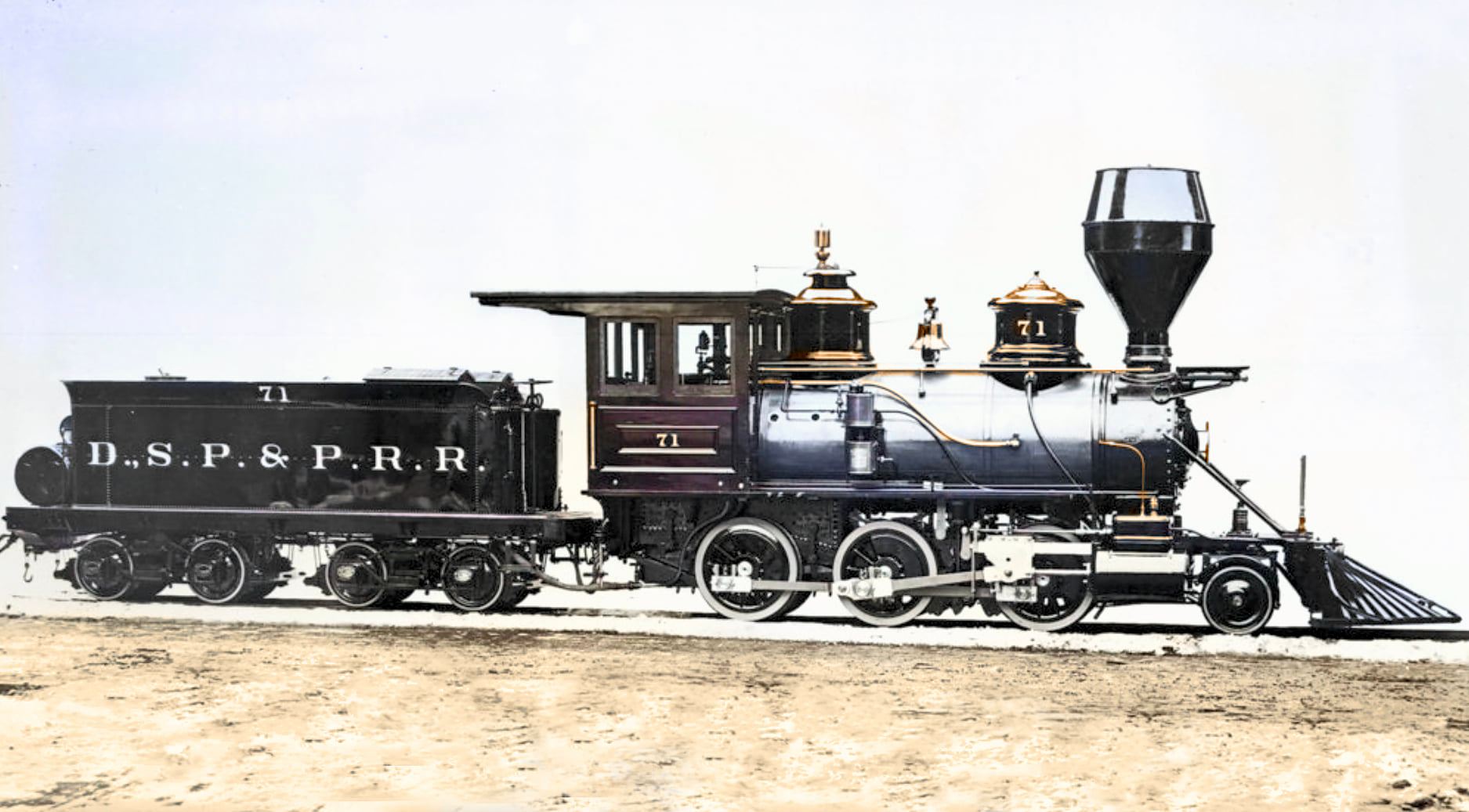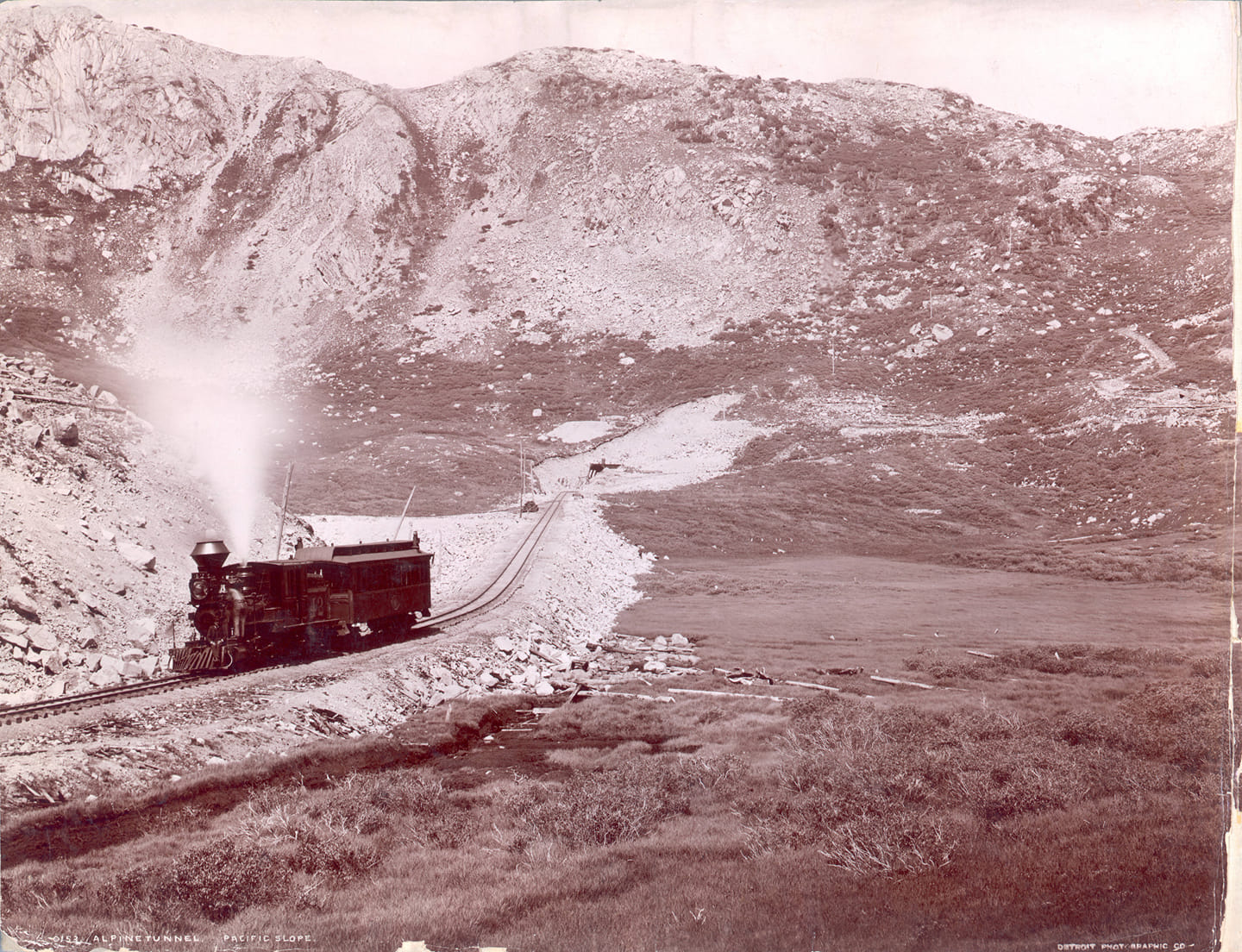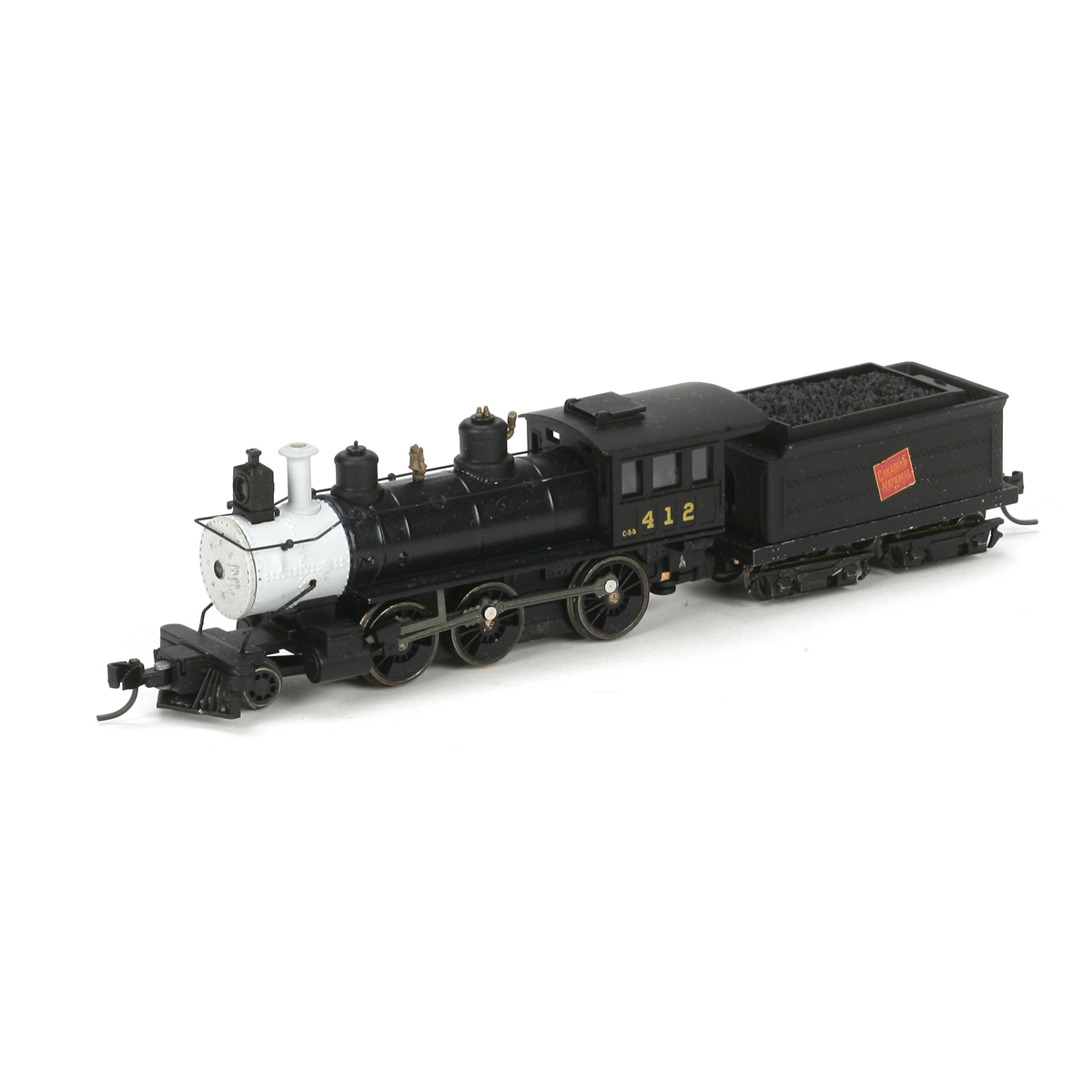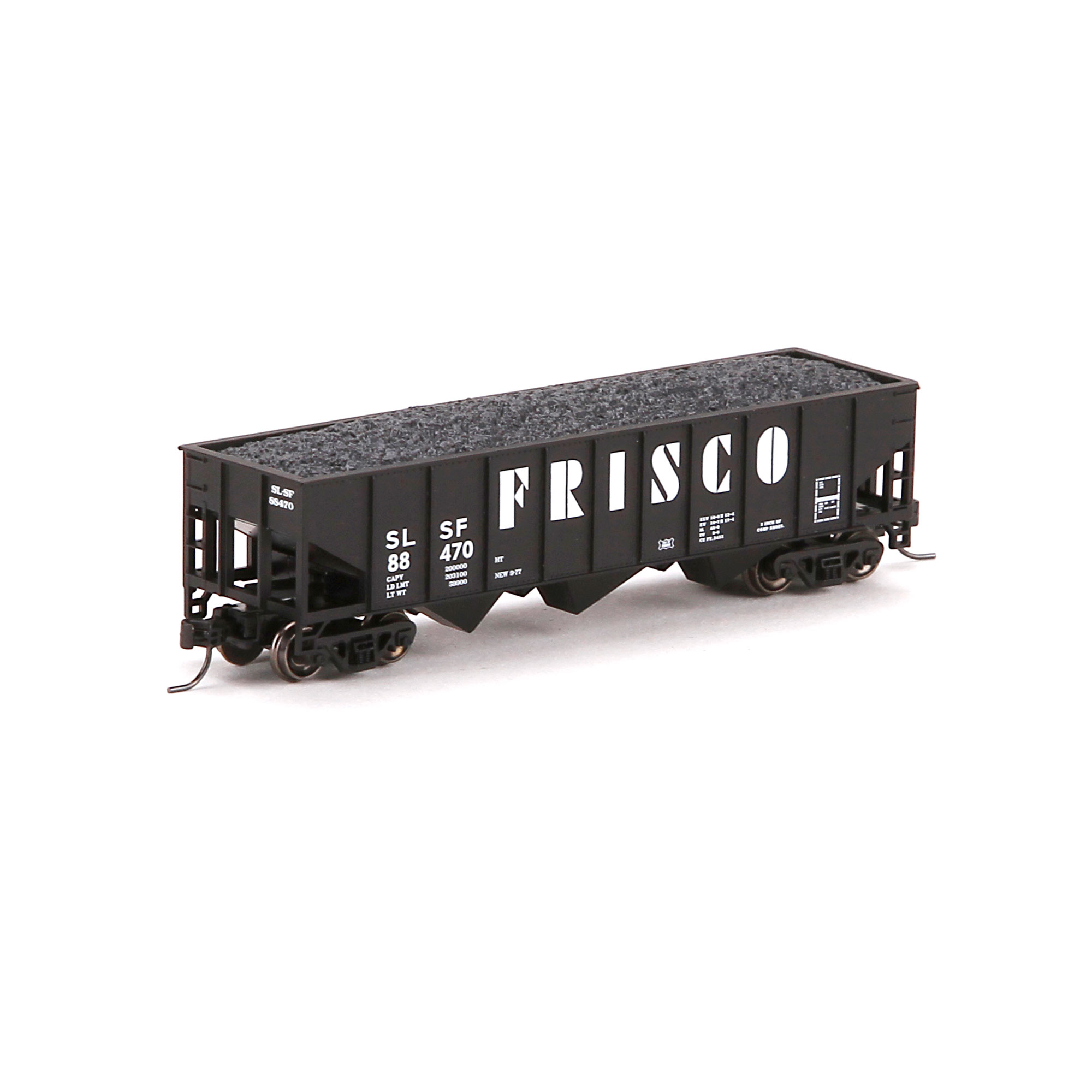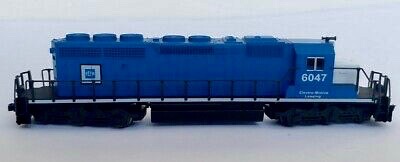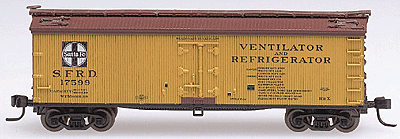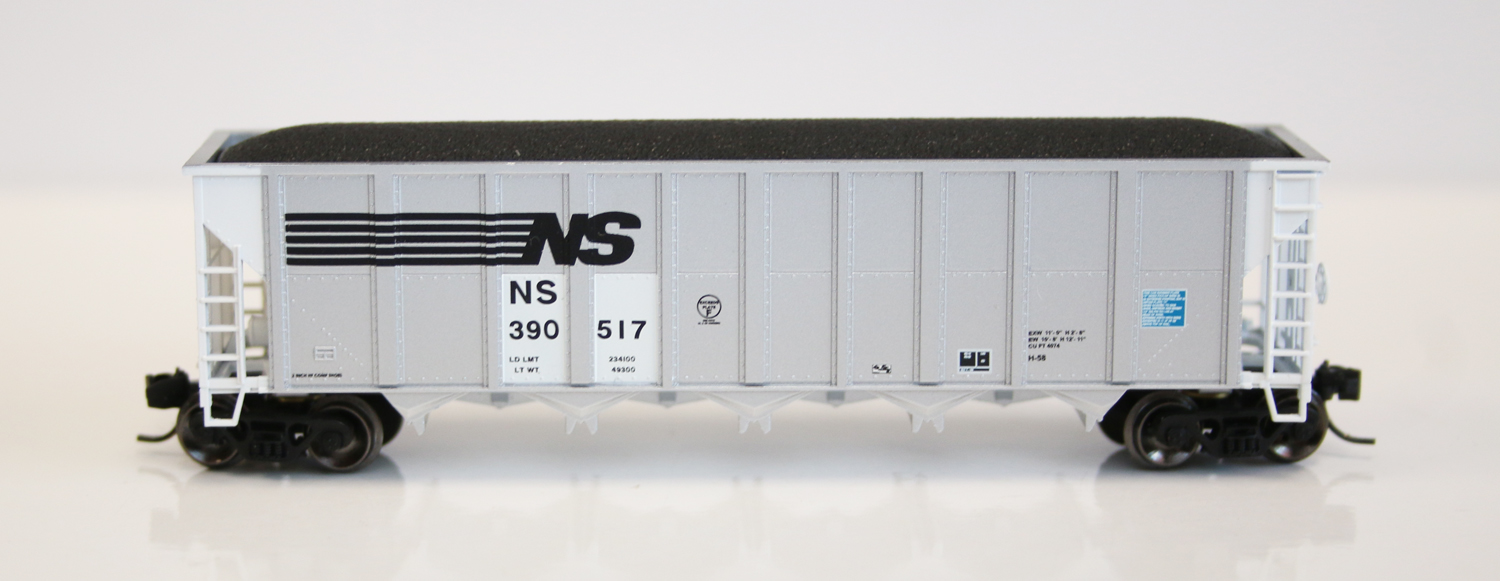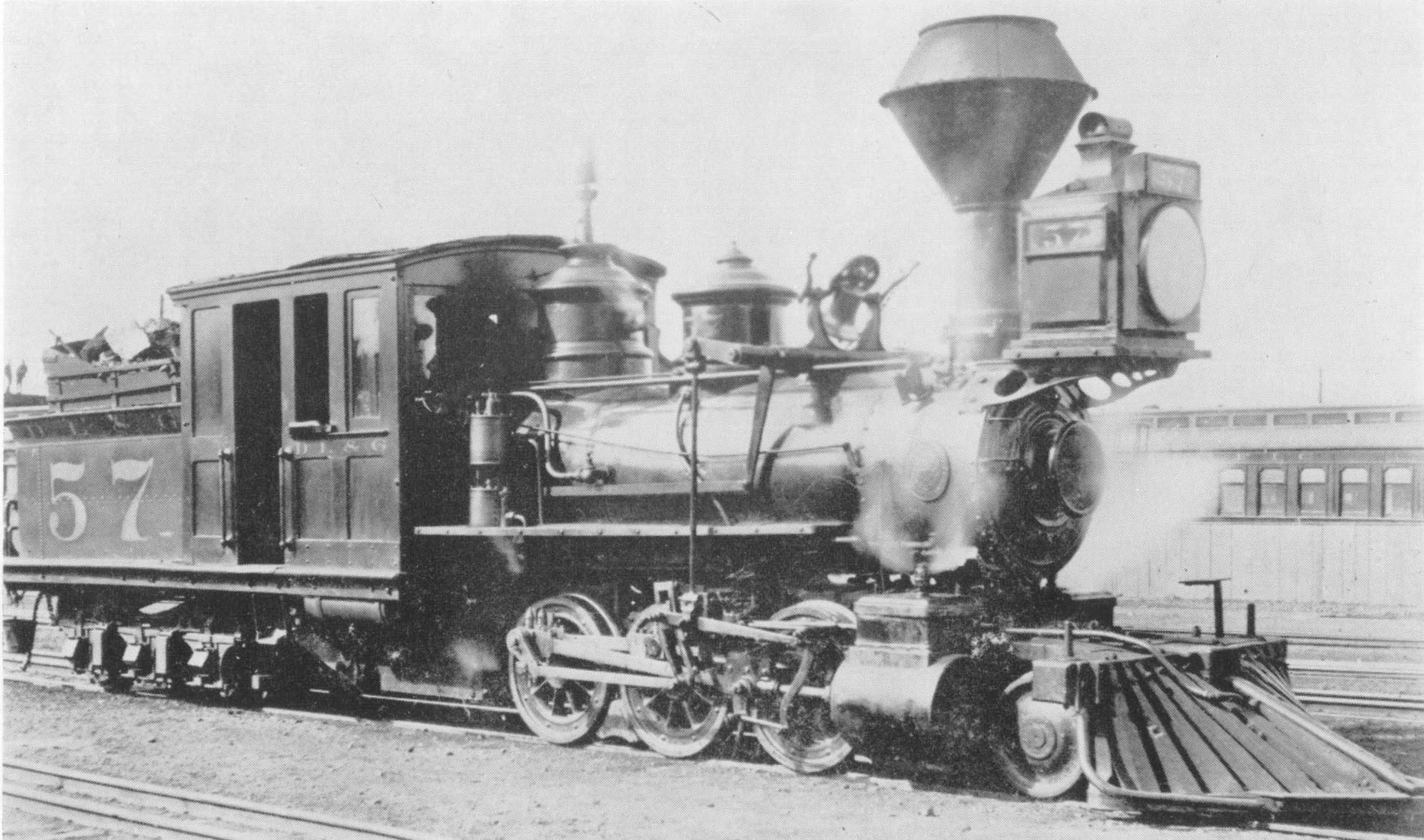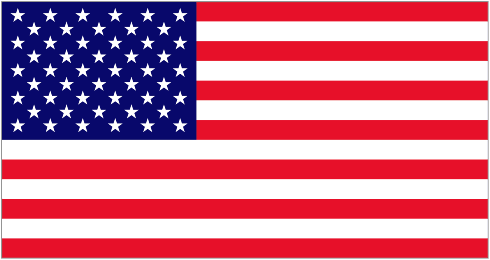Denver South Park & Pacific
| Company Name | Denver South Park & Pacific |
| Category | Railroad |
| Year Founded | 1872 |
| Final Year of Operation | 1889 |
| Termination | Reorganized |
| Successor/Parent | Denver Leadville & Gunnison (Details) |
| Country | United States (Details) |
| Source of Text | Bluford Shops |
| Text Credit URL | Link |
Company History:
The DSP&P was established in 1872 to build a 3’ gauge line from Denver to Colorado’s South Park and on to the Gunnison area. Ultimately, they wished to build two lines from there, one southwest into the mining regions of the San Juan Mountains then to the Colorado River, through the Grand Canyon and on to Southern California. The other would follow what would later become the Rio Grande mainline to Salt Lake City then on to San Francisco. Construction started in 1873. The biggest challenge of building railroads into the untamed West was reaching a source of traffic before you ran out of cash. This was not a problem for the DSP&P. The first line to open was the Morrison Branch in 1874. This brought large amounts of coal, stone and lumber traffic to the DSP&P right away. Construction of the mainline pressed on reaching Webster at the foot of Kenosha Pass in 1879. By that time, the DSP&P was earning $1,200 on a typical day with less than $500 in operating expenses. By that October, they had crossed the South Park (often laying track night and day across the level park) to Como and the base of Trout Creek Pass. More coal mines were served in that area.
At this point, DSP&P changed their focus. Instead of heading for the San Juans (to which the D&RG was already headed) they aimed for the mining region around Leadville. D&RG was also headed to Leadville by following the Arkansas River but the South Park Line was closer. They built over Trout Creek Pass reaching Buena Vista in the spring of 1880. By this time, Jay Gould had control of the Denver & Gio Grande and was buying a large stake in the DSP&P. That brought the two parties to the table. D&RG would build from Buena Vista to Leadville and grant DSP&P trackage rights. DSP&P would continue building west over Alpine Pass and into the Gunnison area and grant trackage rights to D&RG from Buena Vista to Gunnison. That year, Gould obtained full ownership of the DSP&P. While the DSP&P corporate structure remained the same and the public face remained the Denver South Park & Pacific, from a management standpoint, it became the South Park Division of the Union Pacific on the first day of 1881. The line to Gunnison required building the 1,800 foot Alpine Tunnel at an elevation of 11,600 feet. This was the longest narrow gauge tunnel in Colorado. The ridge they tunneled through turned out to be loose rock with underground streams running through it. California Redwood timbers had to be brought in to support the ceiling and walls. There were 4% grades on either side of the pass. An engine house and railroad hotel were built outside the west portal but the elevation and harsh weather made it an unenviable assignment. DSP&P reached Gunnison in 1882, a full year after the D&RG had built their own line over the easier Marshall Pass. Construction of the South Park line continued from Gunnison north to coal mines at Baldwin. Construction crews then turned west toward Utah but the D&RG was way ahead of them and only four miles of track were laid before westward expansion was suspended.
Then in 1884, D&RG canceled their trackage rights agreement, shutting out the DSP&P from Leadville. DSP&P would have to build their own line. Building from the end of their branch to Fairplay was closest but would require boring another long tunnel. They could build alongside the D&RG line from Buena Vista but that line already had the preferred side of the valley. The option they chose was to extend the Breckenridge Branch north to Dickey then southwest to Climax and Leadville. This line, which crossed the Continental Divide twice, was opened in 1884. Although the DSP&P’s route from Denver to Leadville was just 151 miles, versus 276 for the D&RG, the D&RG was already well established. The DSP&P last turned a profit while the Leadville line was still under construction. In 1888, they slipped into receivership and in 1889 it was reorganized as the Denver Leadville & Gunnison.
At this point, DSP&P changed their focus. Instead of heading for the San Juans (to which the D&RG was already headed) they aimed for the mining region around Leadville. D&RG was also headed to Leadville by following the Arkansas River but the South Park Line was closer. They built over Trout Creek Pass reaching Buena Vista in the spring of 1880. By this time, Jay Gould had control of the Denver & Gio Grande and was buying a large stake in the DSP&P. That brought the two parties to the table. D&RG would build from Buena Vista to Leadville and grant DSP&P trackage rights. DSP&P would continue building west over Alpine Pass and into the Gunnison area and grant trackage rights to D&RG from Buena Vista to Gunnison. That year, Gould obtained full ownership of the DSP&P. While the DSP&P corporate structure remained the same and the public face remained the Denver South Park & Pacific, from a management standpoint, it became the South Park Division of the Union Pacific on the first day of 1881. The line to Gunnison required building the 1,800 foot Alpine Tunnel at an elevation of 11,600 feet. This was the longest narrow gauge tunnel in Colorado. The ridge they tunneled through turned out to be loose rock with underground streams running through it. California Redwood timbers had to be brought in to support the ceiling and walls. There were 4% grades on either side of the pass. An engine house and railroad hotel were built outside the west portal but the elevation and harsh weather made it an unenviable assignment. DSP&P reached Gunnison in 1882, a full year after the D&RG had built their own line over the easier Marshall Pass. Construction of the South Park line continued from Gunnison north to coal mines at Baldwin. Construction crews then turned west toward Utah but the D&RG was way ahead of them and only four miles of track were laid before westward expansion was suspended.
Then in 1884, D&RG canceled their trackage rights agreement, shutting out the DSP&P from Leadville. DSP&P would have to build their own line. Building from the end of their branch to Fairplay was closest but would require boring another long tunnel. They could build alongside the D&RG line from Buena Vista but that line already had the preferred side of the valley. The option they chose was to extend the Breckenridge Branch north to Dickey then southwest to Climax and Leadville. This line, which crossed the Continental Divide twice, was opened in 1884. Although the DSP&P’s route from Denver to Leadville was just 151 miles, versus 276 for the D&RG, the D&RG was already well established. The DSP&P last turned a profit while the Leadville line was still under construction. In 1888, they slipped into receivership and in 1889 it was reorganized as the Denver Leadville & Gunnison.
Successor/Parent History:
The DL&G was established in 1889 under the control of Union Pacific to buy the lines of the failed Denver South Park & Pacific at a foreclosure sale. It had a 3’ gauge railroad running southwest from Denver, Colorado through Platte Canyon and into South Park (a park is Colorado-speak for a broad flat valley.) At Como, the line split. One route headed northwest over Boreas Pass to Breckenridge and Dickey before turning south to Climax and Leadville. The other line from Como headed south then west over Trout Creek Pass, through the 1,800’ Alpine Tunnel and on to Gunnison and then north to coal mines at Baldwin. From Denver to Gunnison was 208 miles.
The Panic of 1893 sent parent Union Pacific into receivership the following year and separate receivers were appointed for the DL&G and other roads affiliated with Union Pacific. The receivership lasted four years. In January, 1899 Denver Leadville & Gunnison was combined with the Union Pacific Denver & Gulf and sold to the newly formed Colorado & Southern Railway.
The Panic of 1893 sent parent Union Pacific into receivership the following year and separate receivers were appointed for the DL&G and other roads affiliated with Union Pacific. The receivership lasted four years. In January, 1899 Denver Leadville & Gunnison was combined with the Union Pacific Denver & Gulf and sold to the newly formed Colorado & Southern Railway.
Brief History:
The U.S. is a country of 50 states covering a vast swath of North America, with Alaska in the northwest and Hawaii extending the nation’s presence into the Pacific Ocean. Major Atlantic Coast cities are New York, a global finance and culture center, and capital Washington, DC. Midwestern metropolis Chicago is known for influential architecture and on the west coast, Los Angeles' Hollywood is famed for filmmaking.
Item Links:
We found: 1 different collections associated with
Denver South Park & Pacific - Railroad
- Collection N Scale Model Trains: 2 different items
Item created by: gdm
on 2017-10-10 09:56:18
Last edited by: George on 2024-09-18 08:10:39
If you see errors or missing data in this entry, please feel free to log in and edit it. Anyone with a Gmail account can log in instantly.
Last edited by: George on 2024-09-18 08:10:39
If you see errors or missing data in this entry, please feel free to log in and edit it. Anyone with a Gmail account can log in instantly.


